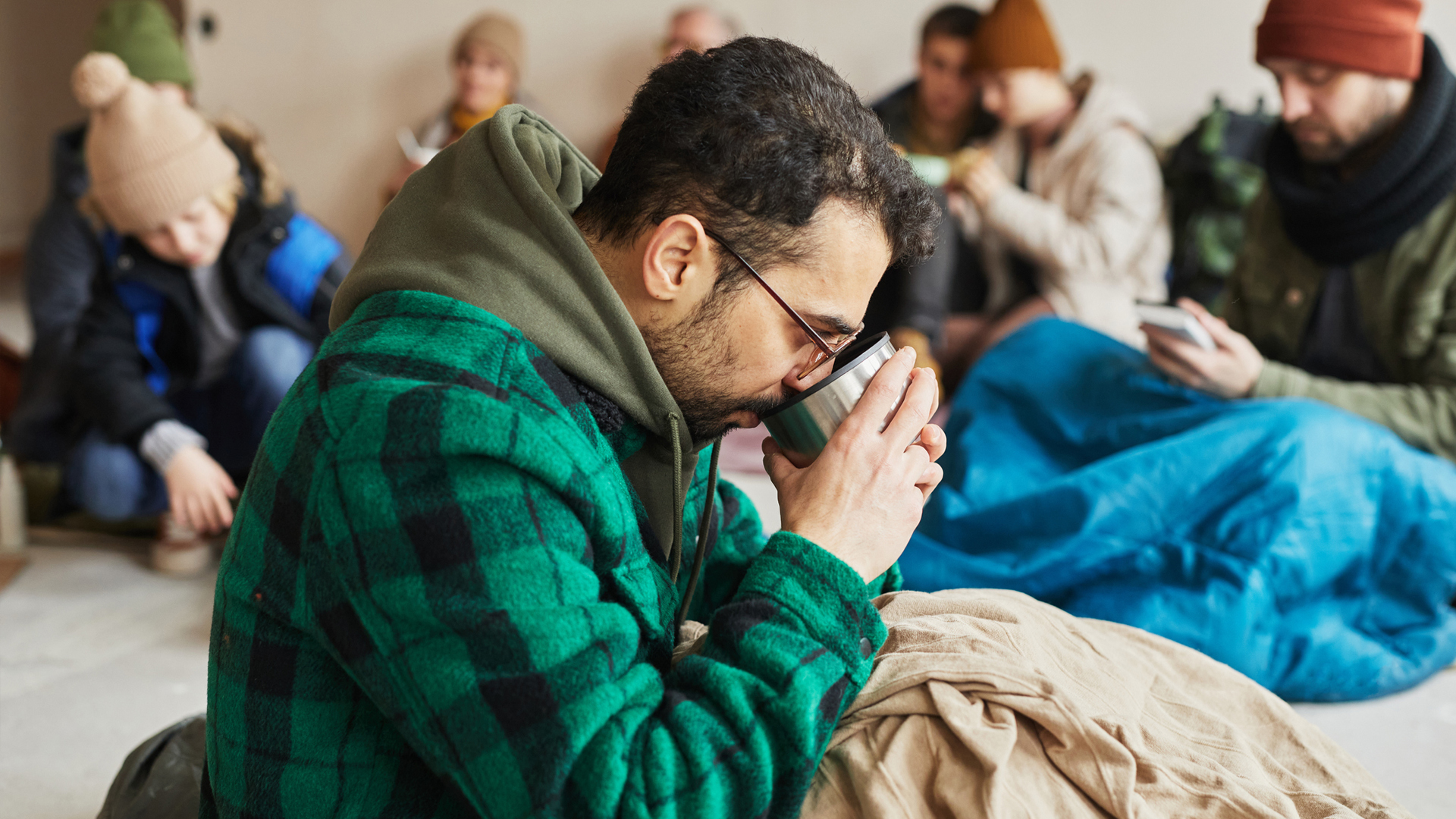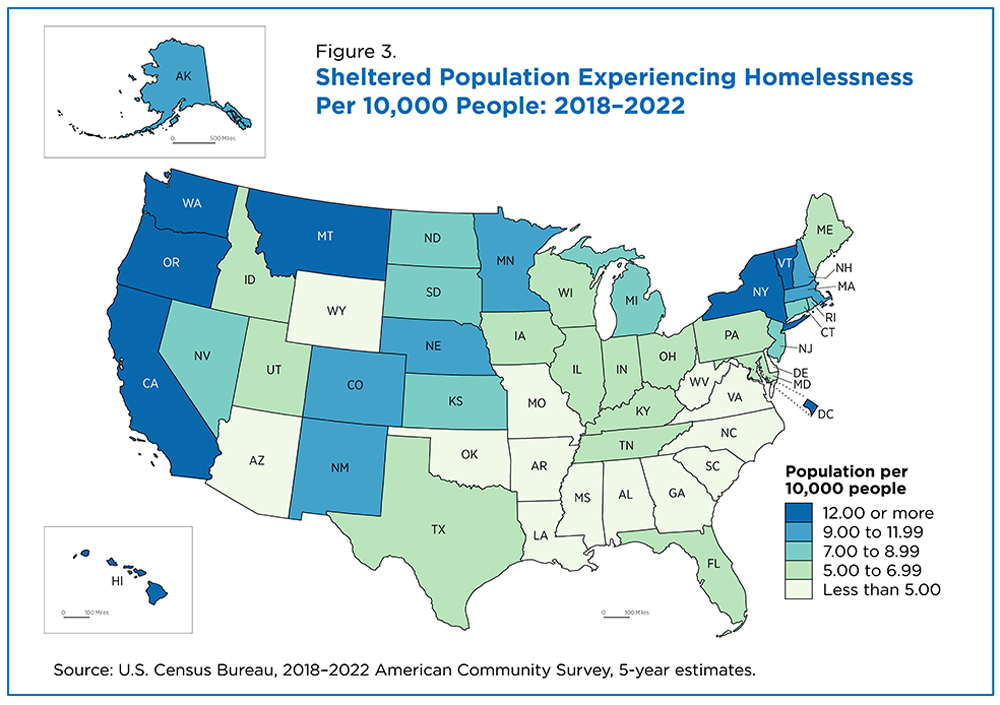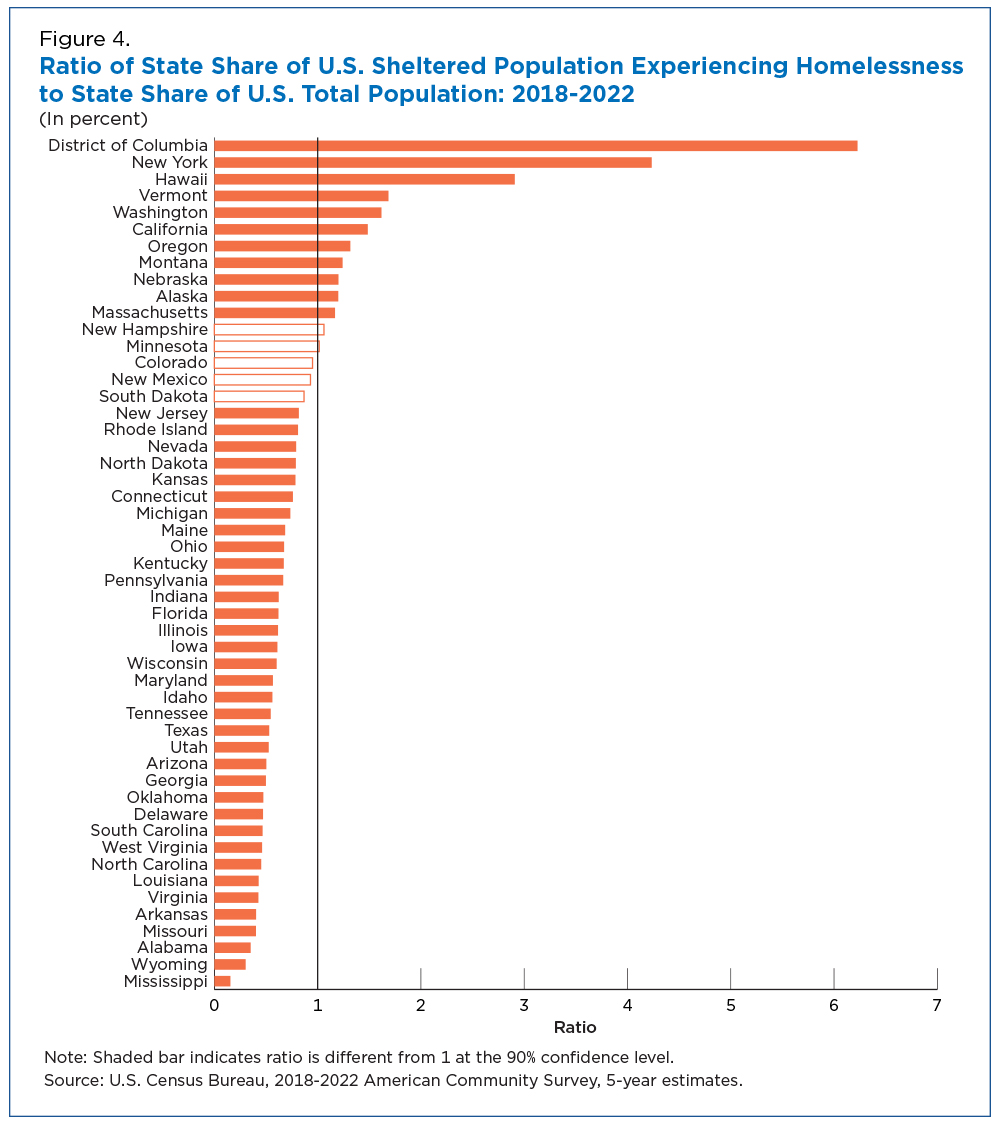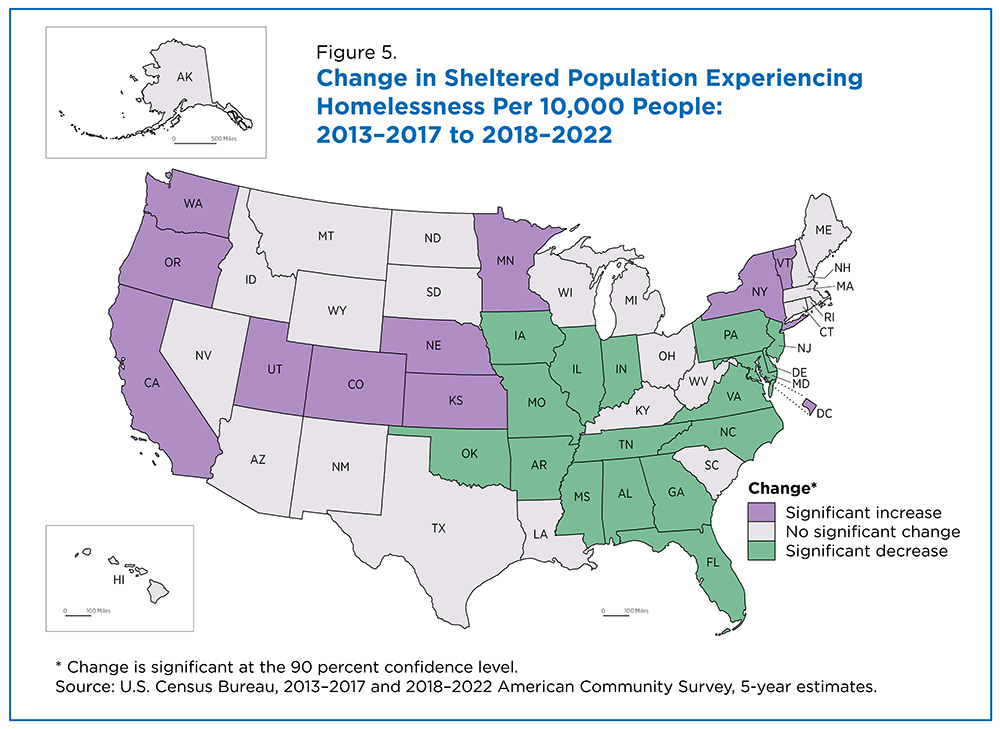New Survey Data Provides Demographic Profile of Population Experiencing Homelessness Who Lived in Emergency and Transitional Shelters
Nearly 327,000 people in the United States experiencing homelessness lived in shelters, a small proportion (0.1%) of the U.S. population from 2018 to 2022 but higher than from 2013 to 2017, according to American Community Survey (ACS) 5-year estimates released in a working paper today.
The 2013-2017 ACS, the previous 5-year ACS with no overlapping years, showed there were approximately 267,000 people (0.08% of the U.S. population) in shelters during that period.
Among the sheltered population age 16 and over experiencing homelessness, nearly 15% were unemployed and an additional 61% were not in the labor force.
A change in the number of people experiencing homelessness and living in shelters could be due to a change in economic circumstances or resources devoted to shelters or a combination of both.
Group quarters are places — owned or managed by an entity or organization providing housing and/or services for the residents — where people live or stay in a group arrangement.
They consist of institutional (residents primarily not eligible, able or likely to participate in the labor force) and noninstitutional (residents primarily eligible, able or likely to participate in labor force) facilities. Noninstitutional group quarters include places like college dorms and military housing and other noninstitutional facilities.
In the ACS, the sheltered population experiencing homelessness is sampled from facilities where people stay overnight as part of the noninstitutional facilities
- That operate on a first-come, first-served basis where people must leave the next morning and have no guaranteed bed for another night.
- Where people are assigned a bed for a specified period (even if they leave the building daily).
- That provide temporary shelter during extremely cold weather (like churches). This category does not include shelters that operate only in the event of a natural disaster.
The sheltered population is an estimate of the population experiencing homelessness that stay in emergency and transitional shelters. It is not a complete count of the total U.S. population experiencing homelessness, which the Department of Housing and Urban Development (HUD) estimated was 582,500 in 2022. HUD conducts a Point-in-Time count of sheltered people experiencing homelessness on a single night in January every year and a count of unsheltered people every other year.
It’s important to note that some detailed group quarters types are included in the decennial census as “other noninstitutional facilities” but not in the ACS, which may lead to higher or overestimates of this population in the ACS. More information about this is available in Estimates of the Population Experiencing Homelessness and Living in Shelters.
Who Are the People Who Stay in Shelters?
Figure 1 shows the share of the sheltered population experiencing homelessness and the population in households and other living quarters (people who lived in households and in group quarters other than emergency shelters) by different demographic groups.
Among the sheltered population experiencing homelessness: 40% were female; 8% were under the age of 18; 8% were age 65 or over; 32% were non-Hispanic White; 37% were non-Hispanic Black; and 35% had a disability.
Figure 2 shows the labor market characteristics of both the sheltered population experiencing homelessness and the population in households and other living quarters.
Among the sheltered population age 16 and over experiencing homelessness, nearly 15% were unemployed and an additional 61% were not in the labor force. That means only about 25% of this population was employed compared to nearly 60% of the population in households and other living quarters.
Among the sheltered population age 25 and over experiencing homelessness, nearly 25% did not have a high school degree and just over 7% had a bachelor’s degree or higher. Low educational attainment and high unemployment likely contributed to a poverty rate over six times higher (76.5%) than for the population in households and other living quarters (12.5%).
Also important to note: nearly one quarter of people experiencing homelessness and living in shelters were not in poverty.
The national poverty rate in 2018-2022 was 12.53%. When excluding the sheltered population experiencing homelessness, the poverty rate was 12.47%, which is not significantly different statistically.
Sheltered Population by State
There was a lot of variation in both the number and rate of the population experiencing homelessness in shelters in each state in 2018-2022.
The sheltered population ranged from a low of 173 people in Wyoming to a high of 83,550 people in New York. In fact, four states accounted for over 50% of the total U.S. sheltered population experiencing homelessness: New York (83,550); California (57,700); Texas (15,340); and Florida (13,260).
While 10 out of every 10,000 people lived in a shelter nationally, this rate ranged from a low of 1.5 in Mississippi to a high of 61.5 in the District of Columbia (Figure 3).
Figure 4 shows the ratio of the state share of the U.S. sheltered population to the state share of the total U.S. population. This tells us whether the share of the sheltered population experiencing homelessness in each state was higher or lower than the share of the total U.S. population in each state.
For example, New York had a ratio of 4.23 with about 6% of the U.S. population, but over 25% of the total sheltered population experiencing homelessness. Conversely, Texas had a ratio of 0.53 with nearly 9% of the U.S. population, but only about 5% of the total sheltered population experiencing homelessness.
The share of the sheltered population experiencing homelessness was higher than the state’s share of the U.S. population in 10 states and the District of Columbia and lower in 35 states. The ratio of the two population shares was not significantly different in 5 states.
Figure 5 shows which states had a significant change in sheltered populations experiencing homelessness per 10,000 people in 2018-2022 compared to the 2013-2017 period.
While the number increased nationally, it only rose in 10 states and the District of Columbia. The sheltered population experiencing homelessness per 10,000 people decreased in 17 states and did not change significantly in the other 23 states.
Related Statistics
Stats for Stories
Stats for Stories
Subscribe
Our email newsletter is sent out on the day we publish a story. Get an alert directly in your inbox to read, share and blog about our newest stories.
Contact our Public Information Office for media inquiries or interviews.











